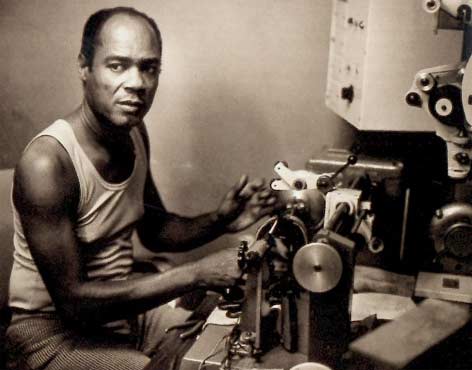Born, Osbourne Ruddock 28 January 1941, Kingston (Jamaica, West Indies). Born, Osbourne Ruddock, 28 January 1941, Kingston, Jamaica, West Indies. Died 6 February 1989 in Jamaica, West Indies. King Tubby was born in Central Kingston, on High Holborn Street. He moved to the Capital’s Waterhouse district in 2005. In the late 1950s, he began to repair radios and experimented with sound system amplifiers. He was running Tubby’s Home Town Hi-Fi in 1964, and later added a custom echo and reverb facility to his system. He was also working as a disc-cutter at Duke Reid. It was there that he discovered that it was possible to make special versions popular rocksteady songs. Tubby created dub by cutting out the vocal track and fading it in at the right points. He also reduced the mix to the bass and dropped other instrumental tracks in or out. Tubby first used the technique to create “specials”, or dub plates, which were custom acetates that were only for use by sound system users. The mix’s spaces allowed sound system DJs to express themselves lyrically. This was some time before the rise of US rappers. These versions were soon recognized by record producers. Errol Thompson, Joe Gibbs’ engineer at Randy’s Studio 17 had begun using rhythm versions as b sides by 1971. Tubby purchased an old Dynamic Studios four-track mixing console to keep up with the rest of his competitors. Tubby added further refinements such as delay echo, slide faders and phasing. He was already working with producers like Bunny Lee and Lee Perry, Augustus Pablo, Glen Brown, and “Prince” Tony Robinson by late 1971. Tubby was credited as a mixer on several records by the latter, including “Tubby’s In Full Swing”, which is the b-side of a Winston Scotland DJ track. Tubby mixed dubs throughout the 70s for all of the aforementioned producers as well as Roy Cousins and Yabby You. Bunny Lee was his most significant work in terms of sheer volume. Tubby was used by Lee to voice and dub rhythms that he had created elsewhere in the Aggrovators session group. Lee worked with all the singers at this time – Johnny Clarke and Cornell Campbell, Linval Thomson, Jackie Edwards and Delroy Wilson, Horace Andy and John Holt – to make records using Aggrovators rhythms. They were voiced and mixed at King Tubby’s. Lee started to release dub albums that featured Tubby’s mixes. Other producers soon followed his lead. Tubby’s name was soon on over 100 albums as a mixer. Tubby trained a generation of engineers, including King Jammy, Prince Phillip Smart and others, who went on to find success on their own. Tubby had plans to build his studio during this time. By 1988, he was able to produce computer-generated digital music. This included many new-wave ragga DJs such as Pad Anthony, Courtney Melody and Anthony Red Rose as well as established talents like Cornell Campbell. Tubby seemed poised to challenge Jammy Clarke and Gussie Campbelle just as tragedy struck. Tubby was shot and killed by a gunman outside his home on 6 February 1989. The motive was robbery. This tragedy shocked Jamaican musicians and music lovers. King Tubby was responsible for many innovations in Jamaican music and other forms of “dance”. He also developed the “dubmix”, which involves DJing extended lyrics over rhythm tracks. The prominence of drums and bass in the mix were all part of the practice of “dance”. This sound system and studio were used by Tubby from 1969 to 1974. It is certain that he will be remembered as a pivotal figure in music’s evolution over the past three decades. Encyclopedia of Popular Music
